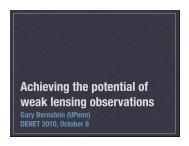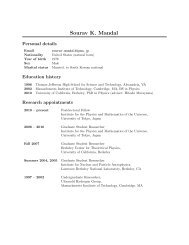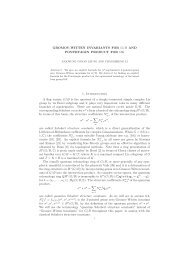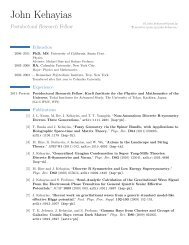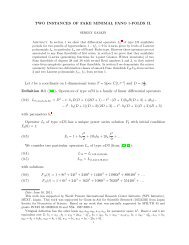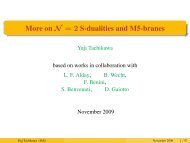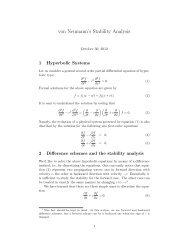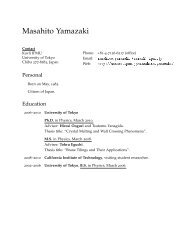STUDY SUMMARY - IPMU
STUDY SUMMARY - IPMU
STUDY SUMMARY - IPMU
Create successful ePaper yourself
Turn your PDF publications into a flip-book with our unique Google optimized e-Paper software.
<strong>SUMMARY</strong> REPORT<br />
WIDE FIELD FIBER-FED OPTICAL<br />
MULTI-OBJECT SPECTROMETER (WFMOS)<br />
3.15 Data Reduction<br />
The Data Reduction (DR) Subsystem comprises four basic sub-components:<br />
• A data handling system (DHS).<br />
• An infrastructure for running DR.<br />
• Quick-look data visualization.<br />
• Data reduction routines.<br />
The subsystem directly interfaces to the Detector Controller(s) (to whom it provides data<br />
storage facilities) and to the Software Control subsystem, which provides overall control and<br />
handles all external interfaces.<br />
The bulk data interface will be provided by Network Attached Storage (NAS) system; the<br />
data store will be directly available through mount points to the other systems. Control interfaces<br />
will be provided as Python wrappers; in this way, the other systems can be insulated from the<br />
underlying communication system. The underlying communications will be handled either by an<br />
ORB (if the design re-uses the Subaru SIMCAM software communications) or by a common<br />
message bus (if the Gemini Pipeline Reduction System - PRS communications are preferred).<br />
Communications with the Quick-look tools will be possible either by direct access to the NAS or<br />
via IVOA Spectral and Image access protocols, thereby allowing any VO-compliant tool<br />
(VOSpec, SPLAT, etc.) to be able to access the data.<br />
Figure 3.15-1: DR Subsystem Block Diagram and Interfacing<br />
56



